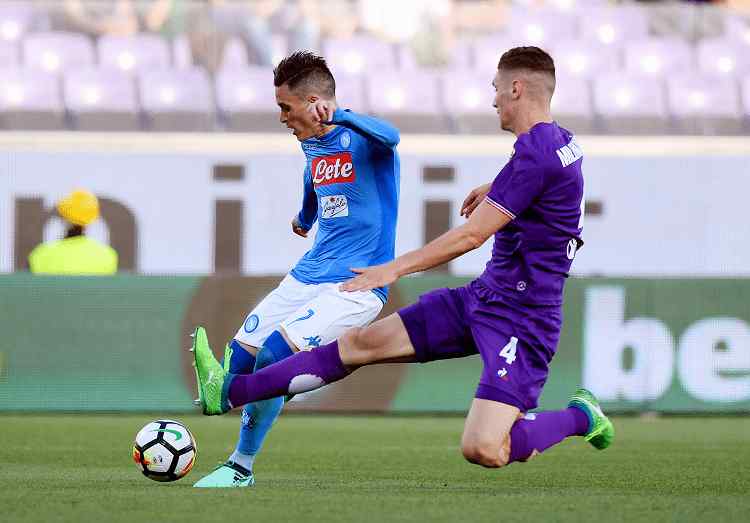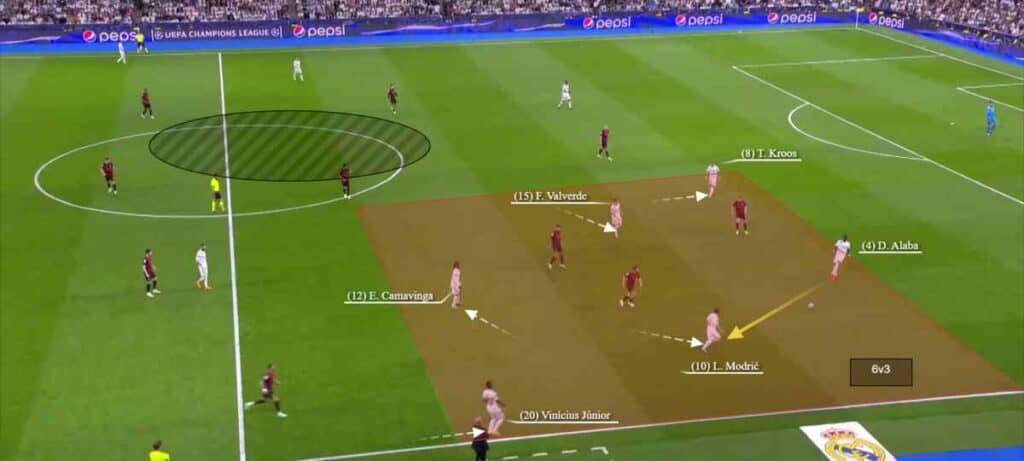
Understanding soccer’s four critical moments is essential to grasping the essence of the sport. Each time the ball changes possession, it’s not just a shift in play, but a pivotal turning point that can define victory or defeat.
For those keen on the subtleties of the game, this guide illuminates the nuanced strategies that distinguish the greats. With an insightful look at these junctures, we offer a lens into the tactics that weave the fabric of soccer brilliance.
In a hurry? Here’s a quick & short answer that’ll definitely help you out!
The four moments in soccer are: In possession, where the team controls the ball; Out of possession, when the opposing team has control; Offensive transition, the shift from defense to attack after regaining possession; and Defensive transition, the change from attack to defense after losing possession. These moments are crucial in shaping the game’s dynamics and are applicable at all levels of play, from grassroots to professional football
Four Moments in Soccer
You acknowledge that soccer’s intricacy is captured in its four distinct stages, each requiring a different strategic method.
When your team controls the ball, you’re in command, setting the pace of play, while without it, your focus shifts to organizing a defense to counter opposing threats.
The switch from attack to defense is pivotal; these brief moments present chances to capitalize on confusion or to restore stability.
1. In Possession

Mastering ball possession in soccer is key, as it’s the chance for the team to set the game’s rhythm and direction. Holding the ball means having the advantage, probing the other team’s defense, and crafting chances to score. It’s not just about keeping the ball but using it with intent.
Players should use spaces well, move smoothly, and keep up technical skills to keep the ball even when challenged.
Each touch and pass is important, requiring sharp awareness and the ability to make quick decisions. It’s about how players move without the ball, the exactness of their timing, and the finesse of a well-measured pass that can take apart even the tightest defenses.
Think of possession like a game of chess; use it smartly to outplay your rivals and, in the end, secure a goal with a strategic move.
2. Out of Possession

Possession signifies a team’s hold and innovation on the field, but when the ball is lost, the dynamic shifts to the vital task of defense and the effort to reclaim dominance.
Without possession, your objective is to interrupt the opposing team’s rhythm and recover the ball. It involves not just physical strength but also mental acumen. You’ll evaluate the current scenario, anticipate the adversary’s tactics, and smartly align yourself. Being one step ahead is crucial.
Your function changes from a creator to a disruptor, akin to a strategic board game. You have to plan ahead, keep disciplined, and ensure clear communication.
Staying organized in defense, applying pressure, and strategic infractions are methods at your disposal. Every player contributes, from attackers pressuring the defense to the goalkeeper coordinating the defense line.
Excelling in this facet guarantees you’re always poised for action – you’re merely transitioning between phases of dominance.
3. Offensive Transition

Immediately after regaining possession, a team’s ability to swiftly transition to offense becomes a pivotal moment that can exploit the opponent’s disorganization. Mastering this phase is crucial for turning defense into scoring opportunities.
Here’s what you need to focus on:
- Quick Decision-Making: Hesitation hinders momentum. You’ve got to think and act fast to catch the opposition off-guard.
- Strategic Player Movement: Intelligent runs create space and passing lanes. Position yourself to receive the ball in stride and advance the attack.
- Effective Ball Distribution: Precise, progressive passing can dismantle a retreating defense. Ensure your touches move the ball forward with purpose.
Understanding these elements elevates your game. It’s not just about moving the ball; it’s about outsmarting your opponents during these critical few seconds.
4. Defensive Transition

Just as swiftly as a team capitalizes on offensive opportunities, it must also prioritize regaining its defensive shape to counteract the opponent’s attacks.
Defensive transition is about reorganizing and re-establishing control when the ball is lost. You need to think quickly, recognizing that your team’s offensive momentum has shifted and it’s time to retreat and regroup.
It’s not just about physical speed; it’s about mental agility. You’ve got to identify threats, communicate with teammates, and take up positions that nullify the opponent’s advantage. The best teams excel in this transition, seamlessly shifting from attack to defense, ensuring they’re never caught off guard.
Understanding the nuances of this moment is crucial—it can be the difference between maintaining a lead and conceding a goal.
The Importance of Offensive Organization in Soccer
A well-organized offense is the pillar of a victorious soccer team, turning individual skill into an unstoppable team effort. Grasping the synchronized movement and strategic placement essential for formidable attacks is key. Here are the reasons:
- Space Creation: Proper organization allows for the creation of space, displacing defenders and carving paths for sharp passes.
- Varied Offense: It provides multiple offensive strategies, with team members swapping roles and ensuring a flow that confuses the opposition.
- Reliability and Productivity: An orderly attack lessens the dependence on singular talent, promoting a reliable method for scoring and making efficient use of the playing field’s resources.
Understanding these concepts, you’ll recognize the skill and exactness in every expertly devised goal.
Training for the Four Moments

Training for soccer’s four moments—defense, transition from defense to offense, offense, and transition from offense to defense—is integral in sharpening a team’s adaptability and reaction to the constantly changing aspects of the match.
One must analyze each moment, grasping the subtleties that determine success or defeat. This is not only about physical strength; it’s a mental game of strategy, where foresight and choices are crucial.
| Moment | Focus Area |
|---|---|
| Defense | Positional awareness, teamwork, intercepting, and restricting |
| Transition to Offense | Rapid choices, seizing opportunities, and increasing numbers in attack |
| Offense | Possession skills, precision in passing, movement without possession, and goal-scoring |
| Transition to Defense | Swift counter-pressure, repositioning, and reorganizing the team shape |
Player Roles and Responsibilities in Each Moment
Understanding the significance of preparation for crucial moments in the match, let’s now look at the distinct roles and duties players must take on to excel in these situations. While moving across the field, keep these key aspects in mind:
- Defensive Cohesion: As a defender, you stand as the last line of defense against opposing team advances. Keeping your formation intact and communicating effectively can disrupt even the most complex attacking strategies.
- Midfield Control: You, the midfielder, act as the dynamo of the team. Control the tempo, bridge the gap between defense and the forward line, and aid in transitions to maintain dominance over the match’s rhythm.
- Attacking Accuracy: Attackers carry the responsibility of turning chances into points. Your arsenal includes strategic placement, situational awareness, and sharp finishing skills; deploy them to convert potential into scores.
Each position acts as an integral part of the team’s collective mechanism. Hone your duties, and the team’s efficacy will increase, mirroring the precision of the entire group’s combined effort.



